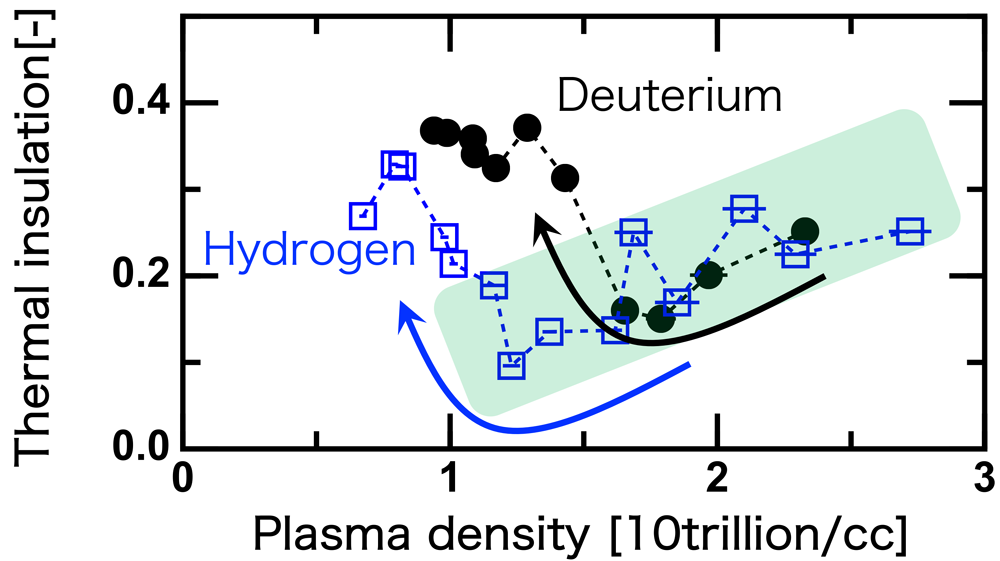A new aspect of isotope effect
The isotope effect is a phenomenon where plasma confinement becomes better as a mass of fuel gas becomes heavier. Further improved confinement is expected in deuterium-tritium plasma, which will be used in future reactors. The Background physics of the isotope effect is now being studied. Recently a new aspect of the isotope effect was found in the LHD.

The isotope effect is a phenomenon where plasma confinement becomes better as a mass of fuel gas becomes heavier. In a simple theoretical scaling study, confinement was considered to be worse in heavier plasmas, where a larger centrifugal force was applied. However, in reality, the isotope effect occurs. Although this outcome is a ubiquitous phenomenon observed in plasmas all over the world, the physical mechanism has not yet been identified. In order to better predict plasma performance in future devices, where deuterium and tritium fuels are used, unveiling the background physics of the isotope effect is highly desirable.
In this study, we discovered a thermal insulation layer embedded in plasma, the so-called internal transport barrier (ITB), having a strong isotope effect. In general, the thermal insulation of plasma deteriorates as its density decreases. However, once the plasma density passes a lower threshold, the thermal insulation recovers. This recovery occurs when a thermal insulation layer spontaneously emerges inside the plasma. It was demonstrated that the thermal insulation layer appeared even at a higher density regime in deuterium plasmas than in hydrogen plasmas. In a separate study, it was found that strong plasma flow acted as the thermal insulation layer. We will assess whether this flow velocity depends on plasma fuel mass in future.
This study was based on a collaboration with Drs. S. Inagaki (Kyushu University) and K. Itoh (Chubu University).
The paper was published on June 15, 2020 in Nuclear Fusion, a journal on controlled thermonuclear fusion by the International Atomic Energy Agency.
